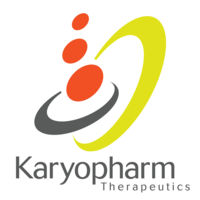预约演示
更新于:2025-12-07

The University of Chicago
更新于:2025-12-07
概览
标签
肿瘤
其他疾病
血液及淋巴系统疾病
小分子化药
化学药
治疗用放射药物
疾病领域得分
一眼洞穿机构专注的疾病领域
暂无数据
技术平台
公司药物应用最多的技术
暂无数据
靶点
公司最常开发的靶点
暂无数据
| 排名前五的药物类型 | 数量 |
|---|---|
| 小分子化药 | 21 |
| 治疗用放射药物 | 3 |
| mRNA | 2 |
| 化学药 | 2 |
| ASO | 2 |
关联
41
项与 The University of Chicago 相关的药物作用机制 MEK1抑制剂 [+1] |
在研机构 |
非在研适应症 |
最高研发阶段批准上市 |
首次获批国家/地区 美国 |
首次获批日期2020-04-10 |
作用机制 ACADS inhibitors [+1] |
非在研适应症 |
最高研发阶段批准上市 |
首次获批国家/地区 美国 |
首次获批日期2019-07-03 |
靶点 |
作用机制 SSTR2拮抗剂 |
在研适应症 |
最高研发阶段批准上市 |
首次获批国家/地区 欧盟 [+3] |
首次获批日期2017-09-26 |
1,113
项与 The University of Chicago 相关的临床试验NCT05856955
Mobile Health for Enhanced Hypertension Self-Management
The investigators will pilot test a hypertension self-management intervention for feasibility and acceptability. The investigators will enroll adults (age ≥18) with uncontrolled hypertension, identified from the electronic health record. In this feasibility trial, the research aim is to explore trial design, participant acceptability of the intervention and outcome measures, and to generate data to inform the design of a future randomized controlled trial.
开始日期2027-09-01 |
申办/合作机构 |
NCT07115914
Prospective Evaluation of PSMA PET Imaging in Surveillance Post-Focal Therapy for Prostate Cancer (PSMA-FT Surveillance Study)
This study is about adding PSMA PET (Prostate Specific Membrane Antigen- Positron Emission Tomography) to routine magnetic resonance imaging (MRI) scans to help detect prostate cancer recurrence in men who have undergone focal therapy for prostate cancer. PSMA PET and multiparametric (mpMRI are both imaging tests that help detect prostate cancer in the body.
A PSMA PET scan, or prostate-specific membrane antigen positron emission tomography scan, is an imaging test that scans and takes pictures of the prostate. PSMA scans use a specialized radioactive imaging dye that sticks to the proteins that are typically found in prostate cancer cells. This imaging dye helps locate areas of prostate cancer anywhere in the body, both inside and outside prostate.
An mpMRI, or a multiparametric (mp) MRI scan, is also an imaging test that scans and takes detailed pictures of the prostate. Unlike regular MRIs, an mpMRI produces a more detailed image of the prostate. Similar to PET scans, mpMRI scans also use an imaging dye that helps the pictures of the prostate appear clearer on scans.
This study will be funded by Blue Earth Diagnostics, a molecular imaging company based in England.
A PSMA PET scan, or prostate-specific membrane antigen positron emission tomography scan, is an imaging test that scans and takes pictures of the prostate. PSMA scans use a specialized radioactive imaging dye that sticks to the proteins that are typically found in prostate cancer cells. This imaging dye helps locate areas of prostate cancer anywhere in the body, both inside and outside prostate.
An mpMRI, or a multiparametric (mp) MRI scan, is also an imaging test that scans and takes detailed pictures of the prostate. Unlike regular MRIs, an mpMRI produces a more detailed image of the prostate. Similar to PET scans, mpMRI scans also use an imaging dye that helps the pictures of the prostate appear clearer on scans.
This study will be funded by Blue Earth Diagnostics, a molecular imaging company based in England.
开始日期2027-08-01 |
申办/合作机构 |
NCT03000803
Implications of Circadian Variation of Human Endocannabinoid Levels on Obesity Risk
The purpose of this study is to examine how the timing of eating changes 24hr profiles of lipids involved in eating for pleasure and how the body makes and uses energy (metabolism).
开始日期2026-10-01 |
申办/合作机构 |
100 项与 The University of Chicago 相关的临床结果
登录后查看更多信息
0 项与 The University of Chicago 相关的专利(医药)
登录后查看更多信息
104,384
项与 The University of Chicago 相关的文献(医药)2026-03-01·ULTRASONICS
Histotripsy-mediated reactive oxygen species generation in vitro
Article
作者: Sammet, Steffen ; Bader, Kenneth B ; Anthony, Gregory J ; Souris, Jeffrey S
Forms of sonodynamic therapy rely on close interactions between microbubbles and agents to generate cytotoxic reactive oxygen species. Microbubbles are inherently intravascular agents, which limits the therapeutic range for effective distribution of reactive oxygen species. Histotripsy is a focused ultrasound therapy that ablates tissue via the generation of a dense cloud of bubbles spontaneously without the need for microbubbles. This study investigated the capacity of histotripsy to generate the hydroxyl radical with and without sonodynamic agents. In the absence of sonodynamic agents, histotripsy produced the hydroxyl radical at rate that was increased by a factor of three relative to other forms of therapeutic ultrasound. These sonochemical reactions were found to correlate strongly with acoustic emissions tracked with passive cavitation imaging. Histotripsy bubble activity was found to increase the rate of hydroxyl radical production for multiple sonosensitizers relative to controls, particularly for ultrasound pulses longer than 20 cycles (i.e., 20 μs) in duration. Overall, these data indicate histotripsy may be a viable approach for activating sonosensitve agents, and this activation may be tracked based on acoustic emission.
2026-02-01·GENE
Characterization of the gut microbiota in patients with stage III colorectal cancer: A case-control study
Article
作者: Diakité, Mahamane T ; Balam, Saidou ; Traoré, Cheick B ; Hou, Lifang ; Fofana, Djeneba ; Boré, Soungou ; Maiga, Almoustapha I ; Somboro, Anou M ; Koné, Amadou ; Fodor, Anthony ; Kamaté, Bakarou ; Nannini, Drew Robert ; Dai, Qi ; Holl, Jane ; Diarra, Modibo ; Maiga, Aminata ; Murphy, Robert ; Sun, Shan ; Kassogué, Yaya ; Ba, Djibril ; Maiga, Mamoudou ; Diakité, Brehima
AIM:
To conduct a case-control study (pilot study) in Africa (Mali) in comparing the gut microbiota of patients with stage III colorectal cancer (CRC) using next-generation sequencing.
METHODS:
Shotgun sequencing was performed to characterize participants' fecal microbiota using Illumina's HiSeq platform. This case-control study involved newly diagnosed CRC patients (n = 23) prior to any treatment initiation, and unrelated healthy controls (n = 24) to elucidate their microbial diversity and relative abundance.
RESULTS:
The findings revealed that the gut microbiota in CRC and in healthy were significantly distinctive according to the PERMANOVA test (R2 = 0.132, P = 0.001), and the alpha-diversity was significantly lower in CRC. Beta-diversity, based on principal coordinate analysis, showed a distinct taxonomy between the CRC and the healthy. Levels of Pseudomonadota, Escherichia, Citrobacter freundii, Klebsiella sp. LTGPAF-6F, Escherichia albertii, Escherichia coli, Caudovirales, Apicomplexa, and Verrucomicrobiota populations were significantly elevated in CRC. The major metabolic pathways with higher relative abundance levels found in CRC compared to healthy were related to HEMESYN2-PWY: heme biosynthesis II (anaerobic), PWY-5154:L-arginine biosynthesis III (via N-acetyl-L-citrulline), FUC-RHAMCAT-PWY: superpathway of fucose and rhamnose degradation, ECASYN-PWY: enterobacterial common antigen biosynthesis, ENTBACSYN-PWY: enterobactin biosynthesis, and AEROBACTINSYN-PWY: aerobactin biosynthesis.
CONCLUSION:
Distinct gut microbiome profiles between healthy and CRC were observed. In particular, the findings showed a significant reduction in microbial diversity in stage III CRC. This study provides initial metagenomic data on Malian patients with CRC. It will be used to create a larger cohort to better understand the relationship between CRC and the gut microbiota in the Malian CRC population.
2026-02-01·JOURNAL OF EXPERIMENTAL CHILD PSYCHOLOGY
Pretend play of scientists boosts young children’s, especially girls’, persistence in science
Article
作者: Huang, Yu Shan ; Rachlin, Tatiana Fugelso ; Bian, Lin
Gender gaps in Science, Technology, Engineering and Mathematics (STEM) emerge as early as elementary school, highlighting the need for early interventions. Recent work suggests that a pretend play intervention, in which girls roleplayed as a hardworking scientist increased their persistence in a novel science activity. However, instead of highlighting scientists' hard work, the pervasive cultural narrative portrays scientists as brilliant, a trait that girls associate less with their own gender than boys. The present study investigates whether pretending to be a brilliant scientist can also boost girls' persistence. Experiment 1 tested a large and diverse sample of four- to seven-year-olds (N = 325, 164 girls, 55% White). Children played a science game in one of three conditions: as themselves (no-roleplay condition), as a hardworking scientist (dedication condition), or as a brilliant scientist (brilliance condition). Results showed that children in both the dedication and brilliance conditions persisted longer in the science activity than those in the no-roleplay condition. This effect was mainly driven by girls. Thus, pretend play of science role models enhances children's science engagement, regardless of the role models' characteristics. Experiment 2 (N = 160, 82 girls, 50% White) revealed that roleplaying as an artist did not yield the same effect, suggesting that pretending to be scientists, not pretend play in general, increased children's persistence in science activities. These findings have broad implications for ways to mitigate the gender gap in science. We discuss possible mechanisms driving the role of pretend play in boosting children's science engagement.
1,016
项与 The University of Chicago 相关的新闻(医药)2025-12-06
·百度百家
格列卫,化学名为伊马替尼(imatinib),是一种靶向药物。它能够精确地作用于白血病细胞的特定分子靶点,阻断其异常增殖途径,从而提高治疗效果并减少副作用。自2001年获批上市以来,格列卫在慢性白血病治疗领域取得了显著成就,被誉为人类抗癌史上的重要突破。近日,随着电影《我不是药神》的热映,格列卫再次成为公众关注的焦点。这款药物的创新与机理不仅限于其化学成分,还包括其在临床上的独特效果。
◉ 科学家的历史贡献
这款药物的诞生,离不开科学家们对癌症与染色体关系的深入研究。费城染色体的发现与相关研究,推动了靶向药物如格列卫的研发。科学家们通过染色体异常与癌症关系的研究,带来了抗癌治疗的突破。尽管在当时未能得到验证,但西奥多·勃法瑞关于癌症与染色体异常的假设在如今的癌症研究中显得极具前瞻性,为癌症治疗带来了新的希望。
◉ 高价与耐药性
尽管格列卫等靶向药物为癌症治疗带来了重要突破,但我们也必须正视其面临的挑战。其高价格及耐药性等问题,都亟待我们进一步探索和解决。未来,随着科学技术的不断进步,我们有理由相信,会有更多像格列卫这样的抗癌药物不断涌现,为患者带来更多生的希望。
◉ 1960年的重大发现
回顾历史,1960年《科学》杂志上的一篇论文犹如一颗重磅炸弹,在科学界引发了巨大的震动。费城染色体缩短的发现标志着白血病研究的转折,改变了科学界对癌症病因的认知。这一发现不仅颠覆了之前关于白血病的研究认知,更开启了癌症研究的新篇章。
◉ 染色体易位的揭示
1973年,芝加哥大学的珍妮特·罗利(Janet Rowley)教授在彼得的研究基础上,揭示了费城染色体缩短的原因是由于9号与22号染色体的易位,导致BCR-Abl融合基因的产生。这一发现,标志着人类在探索癌症致病机制方面取得了重要进展,也为新药研发带来了新的希望。
◉ 伊马替尼的研发过程
随着BCR-Abl融合基因的发现,新药研发的征程也随之展开。上世纪80年代末,Ciba-Geigy公司的科学家们开始了一系列针对蛋白激酶抑制剂的研究项目。在2-苯氨基嘧啶衍生物的基础上,科研团队不断优化分子特性,最终研发出伊马替尼,为口服治疗提供可能。这一系列积极结果为伊马替尼的人体试验铺平了道路。
◉ 临床试验的里程碑
1998年6月,伊马替尼迎来了其历史性时刻,正式进入人体试验阶段。该试验旨在探索药物的安全性并寻找最大耐受剂量。研究团队招募了一批经过治疗但病情仍严重的患者,让他们接受每日口服伊马替尼的治疗。结果显示,该药物不仅耐受性良好,更取得了令人瞩目的疗效。伊马替尼在临床试验中取得卓越成效,迅速获得FDA批准,极大地提高了慢性骨髓性白血病患者的生存率。在其后的3期临床试验中,格列卫的表现更为出色,将患者的5年生存率从30%提升至89%。
回顾格列卫的研发历程,我们不难发现其背后的艰辛与付出。从费城染色体的发现,到美国FDA的加速批准,整整历经了41年的漫长岁月。然而,正是这份对科学的不懈追求和对患者生命的深切关怀,才催生出如此神奇的靶向药物。格列卫的研发故事不仅是一段科学转化的传奇,更标志着靶向治疗癌症新篇章的开启。在抗癌创新的道路上,我们永远不能忘记那些默默奉献的生物学家和研发人员,正是他们的坚守与努力,才让创新药物成为拯救生命的希望。
2025-12-05
标题:利生奇珠单抗治疗克罗恩病患者的长期疗效与安全性
Long-term Effectiveness and Safety of Risankizumab in Patients With Crohn's Disease
期刊:Clinical Gastroenterology and Hepatology
作者:Zinger, Adar et al.
PMID:39461462
关键词:克罗恩病;炎症性肠病;利生奇珠单抗;乌司奴单抗
前言
在过去的二十年中,随着新型先进疗法的引入,炎症性肠病(IBD)的治疗格局显著扩展。目前,针对中重度活动性IBD的治疗选择包括生物制剂,如肿瘤坏死因子(TNF)-α抑制剂、抗白细胞介素(IL)-12/23及抗IL-23药物,和小分子靶向药物,如Janus激酶(JAK)抑制剂、鞘氨醇-1-磷酸(S1P)受体调节剂。
IL-23是参与IBD发病的重要细胞因子。乌司奴单抗(Ustekinumab,UST)是首个用于IBD临床治疗的IL-23靶向药物。利生奇珠单抗(Risankizumab,RZB)则通过特异性结合p19亚基,从而选择性抑制IL-23。III期临床试验ADVANCE和MOTIVATE显示,利生奇珠单抗在诱导缓解方面疗效确切且安全性良好,FORTIFY试验证实了其长期维持治疗的有效性。基于此,利生奇珠单抗于2022年被批准用于治疗中重度活动性克罗恩病(CD)。
由于作用机制相似,RZB在UST经治患者中的疗效备受关注。尽管III期研究中约20%的患者曾接受UST治疗,可能影响结论的普适性,但头对头SEQUENCE研究的初步结果显示RZB在多个临床终点上优于UST。我们此前的研究也显示,RZB在UST初治与经治患者中的短期疗效相近,但仍缺乏长期对比数据。
真实世界数据对于评估药物在常规临床实践中的价值至关重要。本研究旨在前瞻性地评估利生奇珠单抗在大型三级医疗中心的长期疗效与安全性,并比较其在UST初治与经治患者中的疗效差异。
研究方法
1. 研究设计:一项长期、单中心、前瞻性队列研究,纳入2022年7月-2024年3月期间在芝加哥大学IBD中心接受RZB治疗的患者,在基线及治疗后第2、4、8、12、26和52周,对患者的临床数据[包括Harvey-Bradshaw指数(HBI)评分和实验室指标]进行前瞻性评估,同时记录糖皮质激素使用情况及不良事件。
患者按照药品说明书推荐的给药方案进行治疗:第0、4、8周分别静脉输注(IV)RZB 600 mg,共3剂;第12周起改为皮下注射(SC)RZB 360 mg,之后每8周一次。利生奇珠单抗剂量上调至每6周或每4周360 mg的患者同样纳入分析。
2. 纳入标准:纳入≥18岁,并在开始RZB治疗后有至少12周随访数据的IBD患者。
(1)活动性肠道病变队列:纳入因活动性肠道病变开始使用RZB的CD患者,用于疗效分析。
活动性肠道病变的定义为满足以下至少一项:①HBI≥5;②回结肠镜检查提示存在活动性病变的证据;③影像学检查(磁共振小肠造影(MRE)、CT或肠道超声)提示存在活动性病变;④粪便钙卫蛋白(FCP)≥250 μg/g。
排除标准包括:①已行回肠造口或J型储袋手术的患者;②溃疡性结肠炎(UC)或未定型IBD(IBD-U)患者;③在开始RZB治疗前6个月内接受过肠道手术的患者;④因非活动性肠道病变适应证(如单纯肛周病变、关节炎等)使用RZB的患者。
(2)安全性队列:所有患者。
3. 终点定义:主要结局为第12、26、52周的临床缓解率和无激素临床缓解率。
临床缓解:HBI<5;无激素临床缓解:HBI<5,且在评估时未使用任何形式的系统性糖皮质激素(包括布地奈德);C反应蛋白(CRP)正常化:CRP值低于检测实验室规定的正常值上限;FCP正常化:FCP<250 μg/g。
4. 数据分析:定性数据以例数和百分比表示,定量数据以中位数和四分位间距(IQR)表示。缓解率定义为在特定时间点有临床数据的患者中达到缓解的比例,因疾病加重或手术停药者视为未缓解。组间比较采用卡方检验或Fisher精确检验,单因素分析筛选无激素缓解的预测因素,将P<0.2的变量纳入多因素logistic回归分析(P<0.05为显著)。
研究结果
1. 基线特征:共有243例患者接受利生奇珠单抗治疗并完成至少12周随访。根据纳入和排除标准筛选后,活动性肠道病变队列共纳入134例CD患者。
该疗效队列中92.5%的患者完成了≥6个月随访,71.6%完成≥1年随访。患者中位年龄43岁(IQR 32-55岁),中位病程13.5年(IQR 8-24.75年),女性占比56%,50.7%有肠道手术史。队列中47.7%为UST初治患者,52.3%为UST经治患者。在UST经治患者中,70%曾接受过剂量上调方案(每6周或每4周90 mg)。与UST初治患者相比,UST经治患者年龄更大、病程更长、接受过多种先进疗法的比例更高(见表1)。
2. 临床与生化结局:活动性肠道病变队列总体基线中位HBI为6(IQR 3–9),其中UST经治患者基线中位HBI高于初治患者,两组均在第2周出现HBI下降趋势(见图1)。
图1 HBI随时间变化趋势
第12周时,69%的患者达到临床缓解,58%达到无激素临床缓解;第26周, 64%和58%的患者分别维持临床及无激素临床缓解;第52周时分别有54%和50%持续达标。UST经治患者缓解率在数值上均低于初治患者,但无统计学差异(见图2)。
图2 第12、26和52周的临床缓解和无激素临床缓解比例
第12、26、52周时患者的治疗持续率分别为96%、81%和67%。在第12周达到无激素临床缓解的72例患者中,92%、80%的患者分别在6个月和1年时维持治疗(见图3)。有15例(11.2%)患者因标准剂量疗效不足而将其上调至RZB 360 mg每6周或4周,其中12例为UST经治患者。
图3 总体队列及第12周达到无激素临床缓解(SFCR)患者的治疗持续性
在可获得的FCP和CRP数据中可见,基线中位FCP为458 mg/g(IQR 181-962;n=31),第12周降至128 mg/g(IQR 11-302;n=55),第26周为90 mg/g(IQR 38.25-183.75;n=30),第52周时为76 mg/g(IQR 19-204.5;n=17)(见图4)。基线时35.4%的患者FCP<250 mg/g,该比例在第12、26周分别升至72.7%和 83.3%,第52周时为76.5%。基线时66.7%的患者CRP在正常范围,第12、26、52周时CRP正常比例为64.9%、62.7%、48%。
图4 FCP随时间变化趋势
3. 1年时无激素临床缓解的预测因素:单因素分析显示,疾病持续时间较长、有肠道切除史、既往接受先进疗法次数较多、曾使用UST以及基线HBI较高的患者,在1年时达到无激素临床缓解的几率更低。多因素分析中,更长的疾病持续时间仍保持临界显著性(OR 0.856;95% CI 0.732-1.002;P=0.053),其余变量无统计学显著性(见表2)。
4. 安全性结局:243例患者均获得安全性数据,其中169例完成了1年随访。随访期间,2.1%的患者接受了IBD相关手术,6.6%因IBD住院。1例患者在首次接受利生奇珠单抗时出现呼吸急促、胸闷和头晕等超敏反应,经治疗后缓解,该患者既往接受英夫利昔单抗时亦有类似反应。常见不良事件包括疲劳(4.9%)、关节痛(2.5%)、上呼吸道感染(1.6%)、恶心(1.6%)等;6例(2.5%)出现疑似湿疹、银屑病或皮肤干燥的皮肤病变。
讨论
本研究聚焦于利生奇珠单抗在CD治疗中的实际应用,通过大样本长期真实世界数据,补充了UST经治患者疗效的证据,对临床决策具有重要参考意义。
研究结果显示,利生奇珠单抗治疗CD的临床疗效持久,第12、26、52周时的临床缓解率分别为69%、64%和54%,无激素临床缓解率分别为58%、58%和50%,与III期临床试验结果总体相当。尽管UST经治患者的缓解率在数值上低于初治患者,但多因素分析表明既往UST治疗并非独立影响因素,提示该药可作为UST治疗失败后的有效后续选择。在生化指标方面,FCP中位水平持续下降,正常化率显著提升,而CRP变化不显著可能与基线正常率较高及数据缺失有关。此外,本研究显示出患者良好的治疗持续性,1年治疗保持率达67%,且诱导期反应良好的患者后续依从性更高。安全性方面,未发现新的风险信号,总体与文献已知数据一致。
本研究的优势在于采用规范的前瞻性随访设计,系统获取了预设时间点的临床数据,因而能够全面评估诱导期与维持期的治疗应答。同时,研究中乌司奴单抗初治与经治患者的比例相当,为两类患者的疗效比较提供了可能,这也是其优于既往以经治患者为主的研究之处。
然而,研究也存在局限性。作为一项单中心研究,患者以白种人为主(77%),结论外推至其他地区和种族人群时需谨慎。且受真实世界研究特性的影响,部分患者未能完成全部生物标志物检测,且尽管采用前瞻性设计,部分时间点仍存在数据缺失,可能对结果的完整性造成影响。
翻译与校对:张虎教授
审核与点评:张虎教授
往期内容
【艾肠有道】NEJM:乌帕替尼诱导和维持治疗克罗恩病
【艾肠有道】AP&T:从STRIDE-Ⅱ共识到临床实践—— “达标治疗(T2T)”的机遇与挑战
【艾肠有道】Cells:新型小分子药物治疗炎症性肠病的现状和未来
【艾肠有道】JCC:口服小分子药物治疗炎症性肠病的疗效和安全性:系统综述和Meta分析
【艾肠有道】Gut:炎症性肠病的不同愈合水平:黏膜、组织学、透壁、屏障及完全愈合
【艾肠有道】CGH:比较不同先进疗法治疗克罗恩病患者的内镜结局:系统综述和Meta分析
【艾肠有道】JCC:早期肠道超声预测溃疡性结肠炎患者对生物制剂的长期内镜应答
【艾肠有道】CGH:无论既往是否使用生物制剂,乌帕替尼治疗克罗恩病患者均可实现临床和内镜改善
【艾肠有道】AP&T:乌帕替尼在中重度活动性溃疡性结肠炎患者中16周延长诱导治疗和52周维持治疗的疗效和安全性
【艾肠有道】JCC:2024 ECCO克罗恩病指南更新解读
【艾肠有道】NEJM速递——曹倩教授:利生奇珠单抗与乌司奴单抗治疗中重度克罗恩病的头对头研究
【艾肠有道】AJG:乌帕替尼与托法替布治疗溃疡性结肠炎的一年疗效比较:一项多中心队列研究
【艾肠有道】炎症性肠病新治疗手段在临床实践中的考量与定位
【艾肠有道】Clin Exp Med:乌帕替尼治疗急性重度溃疡性结肠炎患者的疗效与安全性:一项中国IBD单中心研究
【艾肠有道】2024 AGA中重度溃疡性结肠炎药物治疗指南更新解读
【艾肠有道】TNF抑制剂经治UC患者接受不同先进疗法诱导缓解的疗效差异
【艾肠有道】乌帕替尼治疗炎症性肠病的疗效和安全性:一项多中心真实世界研究
【艾肠有道】ECCO 2025重磅聚焦│真实世界乌帕替尼治疗IBD疗效突破
【艾肠有道】2024 ECCO炎症性肠病肠外表现指南更新解读
【艾肠有道】CGH:美国多中心回顾性队列研究探索真实世界中乌帕替尼治疗克罗恩病的疗效与安全性
【艾肠有道】CGH:乌帕替尼治疗肛瘘型克罗恩病疗效和安全性-基于3项III期研究的事后分析
【艾肠有道】JCC:真实世界利生奇珠单抗治疗克罗恩病疗效与安全性分析:基于一项多中心回顾性研究
【艾肠有道】J Clin Med:生物制剂与小分子药物治疗中重度溃疡性结肠炎患者内镜改善和黏膜愈合疗效:系统评价与Meta分析
【艾肠有道】利生奇珠单抗治疗中重度克罗恩病的疗效与安全性:首项亚洲真实世界数据(STAR试验)
【艾肠有道】TAG速递——曹倩教授:乌帕替尼在炎症性肠病中的治疗偏好
【艾肠有道】CGH:乌帕替尼再诱导治疗与高剂量维持治疗在炎症性肠病中的真实世界经验
鸣谢艾伯维医药贸易(上海)有限公司对本次活动的支持
本材料仅供中国大陆境内的医疗卫生专业人员作为学术参考,而非针对一般公众,亦非广告用途。医疗卫生专业人员在做出任何与治疗有关的决定时,应根据患者的具体情况,参照药监局核准的药品说明书。如果您不是医疗卫生专业人士,药物使用请咨询专业医生。
进入公众号页面,可阅读我刊已发表精彩内容
临床结果临床3期临床2期临床成功
2025-12-05
·百度百家
新一轮国运已经开启,顶尖专家"归国潮"爆发,美国根本拦不住
深圳清华国际研究生院的授证仪式上,查尔斯·利伯接过聘书那一刻,全场鸦雀无声。这位美国五院院士、哈佛化学系前主任,三年前还因为跟国内机构合作搞研究被美国司法部盯上,漫长的调查和诉讼几乎毁了他的学术生涯。从哈佛离职后,他几乎没犹豫就答应了清华的邀请。这不是孤例,越来越多顶尖科学家正在用脚投票,而美国那套审查大棒,反倒成了最好的推手。
美国自己把人才往外推
说起这事儿,得从2018年特朗普那个"中国行动计划"说起。表面上防间谍,实际就是针对华裔科学家的审查大棒。FBI每年得办几起案子,上千教授被查,20多人直接起诉。华裔在美国总人口才1.5%,科研圈里占比却高得多,因为咱们教育传统就这样,注重钻研。可这计划一出,签证卡得死死的,经费查得鸡飞狗跳,邮件还被翻个底朝天。
今年特朗普重返白宫,这套又重启了。3月28日FBI直奔印第安纳大学教授王晓峰家,搜家搜得天翻地覆,连他老婆都牵连进去。国会亚裔议员跳脚反对,可行动照扩不误。斯坦福报告直接指出,从2018年起华裔科学家离美人数涨了75%,三分之二奔中国去了。普林斯顿数据更狠,2018年一年就上千人走人。
CNN也报道,至少85名在美国干活的科学家全职跳槽到中国机构。高校招聘冻了,经费砍得狠,中国这边研发投入却年年涨,去年就破3.3万亿,高校增速14.1%。美国想卡脖子,谁知自己先慌了。调查问卷里,三分之一华裔觉得不受欢迎,72%感到不安全,42%怕研究中断。过去三年,3878名华人科学家打包回国。
顶尖大脑集体转向
这波归国潮,名单亮眼得很。张益唐,1955年生,北大毕业后1985年去美国普渡读博,2013年证明素数间隙小于7000万的无穷对,推进孪生素数猜想一炮走红。拿过麦克阿瑟奖、科尔奖,2016年到加州大学圣芭芭拉分校当教授。6月27日他举家回国,全职加盟中山大学香港高等研究院当首席科学家。大湾区定居,学校飞机一出美领空就公布任命,海关专人接机。
林文斌,1966年生,中国科大本科,1994年伊利诺伊大学博士,专注金属有机框架材料。芝加哥大学讲席教授,欧洲科学院院士,美国发明家和医学工程院院士。团队搞出的纳米药物递送系统,抗癌药已经进临床I期。11月3日他全职入西湖大学理学院,当化学讲席教授,管可持续发展与健康分子材料实验室,还兼医学院和工学院。
去年瑞典生物学家卡尔·尼尔森带着核心团队加盟上海交大,把钻研了三十年的基因编辑技术也一并带过来。紧接着,英国皇家学会院士戴维·金领着十个顶尖科研人员,全职入驻中科院上海生命科学研究院。刘畅3月12日回国,到北大重离子物理研究所当助理教授。林华新,著名数学家,同批回国。高华全,力学材料专家,去年加盟清华。
王存玉,美国医学科学院院士,去年12月离开UCLA,到北大临床医学高等研究院当院长。论文110多篇,被引1.3万次。王中林,纳米发电机之父,美国发明家科学院院士,去年下半年回中科院北京纳米能源所当所长和首席科学家。孙少聪,癌症科学家,回国建实验室。陈婧,计算机科学家,1月23日离开美国加盟清华。
科研环境的天平在倾斜
去年以来至少17位顶尖科学家回国,75%以上从美国来,数学物理占比最大。西湖大学去年拉来陈华一、张晓明、汪徐家。深圳东壁科技数据显示,2020到去年中国顶尖科技人才从1.88万增到3.25万,全球占比28%,超美国27%。美国顶尖科学家从3.66万降到3.18万。英国《经济学人》去年12月2日直说,美国政策无偿输出高端人力,重创自家创新。
从哈佛回到北大工作的李博士感触很深:"现在国内的实验设备、研究经费、科研平台都达到国际一流水平,有些领域甚至领先全球。"今年中国研发投入总量预计达到3.2万亿元,占GDP的2.8%,已经接近发达国家水平。北京、上海、深圳的科研基础设施建设速度惊人,大型科学装置不断涌现。
从加州大学伯克利分校回国的王教授提到个细节:"在美国我得花大量时间申请科研经费,有时候因为经费问题研究都得中断。回国后拿到了充足的启动资金和团队支持,可以专注于科研本身,这才是科学家最渴望的环境。"从麻省理工回到清华的张教授说得更实在:"十年前我离开时,很多人说我疯了才会回来。现在反而有人说我疯了才会离开美国。时代真的变了。"
人工智能领域人才流失最明显。去年秋天,正在OpenAI参与GPT-4研发的陈铭宇,算法优化能力特别出色,公司高层开出百万年薪想留他。但他还是回国了,加入深圳一家AI初创企业。才一年时间,他们团队推出的多模态大模型"StarMind",中文语义理解准确率就超过了同类产品。这个成绩跟达摩院AI模型在CLUE榜单上超越人类表现、DeepSeek模型在中文语境的突出表现相呼应,全球科技圈都在关注。
不只是待遇更是归属感
一位不愿透露姓名的归国科学家说:"我在美国工作了八年,始终感觉是'外来者'。学术上虽然获得认可,但总有一种无形的天花板。回到祖国,我终于找到了真正的归属感。"曾在美国一所著名大学担任副教授的小陈,专攻人工智能领域,事业发展得挺顺利。但他还是在去年底选择回国,加入一所国内高校。"在美国我始终感觉是局外人,很难真正融入主流社会。回国后不仅能继续从事前沿研究,还能为国家科技进步贡献力量,这种使命感是无可替代的。"
今年1月,七院院士、国际力学、材料和工程科学领域顶级专家高华健全职加盟清华,成为讲席教授。他是迄今为止国际力学领域唯一同时获得三大最高荣誉的科学家。这样的顶尖人才选择归国,给中国科研界注入了强大动力。加州大学伯克利分校发了份报告,数据挺惊人:从2015年到现在,超过2.3万名华裔学者离开了欧美,其中72%回到了国内。
这些海归科学家带回的不只是知识和技能,还有国际视野和创新理念。中科院一位研究人员说:"海归科学家往往能把国际先进理念跟中国实际需求结合起来,产生更具创新性的成果。"人工智能领域就是个典型例子。近几年多位海归科学家在国内建立研究团队,推动了中国AI技术的快速发展。今年全球人工智能领域的顶级论文中,中国作者占比已经达到30%左右,相当一部分来自海归科学家团队。
科技自主步入快车道
这些大脑落地,中国科技就加速了。6G专利占全球40.3%,5G基础上继续领跑。归国团队直推工程化,人工智能项目落地快,生物医药新分子冲击欧美药企。量子计算、合成生物学,中国主导国际论文超美国。2019到2021年,3878华人科学家回国,实验室重启,项目续上。
北大清华浙大中科大这些老牌校,外加西湖大学这种新机构,全线吸才。2022年丘成桐全职清华,说美国歧视严重,科学家只能走人,对美国是灾难。骆明辉分析,中国薪酬补助实验室政策更吸引,海外危机感重。孙玉涛说,现在学科差距小,核心是人,回国带队培养青年。
科睿唯安今年6月发布的《G20科研创新发展报告》显示,今年中国发表的高质量科学论文数量达到92万篇,位居G20国家首位,美国以78万篇位居第二。在量子通信、人工智能、新能源电池等前沿领域,中国的专利申请量和技术转化效率已经连续五年领跑全球。法国《世界报》在今年诺贝尔物理学奖公布次日,用深度报道解读了中国的科研发展格局,给出明确结论:东方正加速成长为全球科研超级大国,其崛起之势不可逆转。
结语
封锁是催化剂,短期疼,长远壮骨。中国反脑流失成趋势,美国倒退风险大。公众对外籍有时摇摆,政策却包容,门开风进火旺。今年后美国高校冻招聘,经费缩,跨境减。中国项目长龙,AI到医药,归国队伍带来标准和信任。竞争不是卡人,是谁桌子上人多。
人才流动是全球化时代的常态,关键在于创造有利于人才发挥作用的环境。正如一位归国科学家所说:"科学无国界,但科学家有祖国。在哪里能更好地发挥才能、实现价值,科学家自然会做出选择。"未来五年内,预计还将有上万名高层次科技人才选择回国发展。这将为中国科技创新注入持续动力,加速中国向创新强国的转变。人才回流加制度自信,国运曲线拉长。这势头,美国拦不住,专家选祖国,添砖加瓦。
100 项与 The University of Chicago 相关的药物交易
登录后查看更多信息
100 项与 The University of Chicago 相关的转化医学
登录后查看更多信息
组织架构
使用我们的机构树数据加速您的研究。
登录
或

管线布局
2026年01月05日管线快照
管线布局中药物为当前组织机构及其子机构作为药物机构进行统计,早期临床1期并入临床1期,临床1/2期并入临床2期,临床2/3期并入临床3期
药物发现
10
21
临床前
临床1期
5
5
临床2期
其他
32
登录后查看更多信息
当前项目
登录后查看更多信息
药物交易
使用我们的药物交易数据加速您的研究。
登录
或

转化医学
使用我们的转化医学数据加速您的研究。
登录
或

营收
使用 Synapse 探索超过 36 万个组织的财务状况。
登录
或

科研基金(NIH)
访问超过 200 万项资助和基金信息,以提升您的研究之旅。
登录
或

投资
深入了解从初创企业到成熟企业的最新公司投资动态。
登录
或

融资
发掘融资趋势以验证和推进您的投资机会。
登录
或

生物医药百科问答
全新生物医药AI Agent 覆盖科研全链路,让突破性发现快人一步
立即开始免费试用!
智慧芽新药情报库是智慧芽专为生命科学人士构建的基于AI的创新药情报平台,助您全方位提升您的研发与决策效率。
立即开始数据试用!
智慧芽新药库数据也通过智慧芽数据服务平台,以API或者数据包形式对外开放,助您更加充分利用智慧芽新药情报信息。
生物序列数据库
生物药研发创新
免费使用
化学结构数据库
小分子化药研发创新
免费使用




